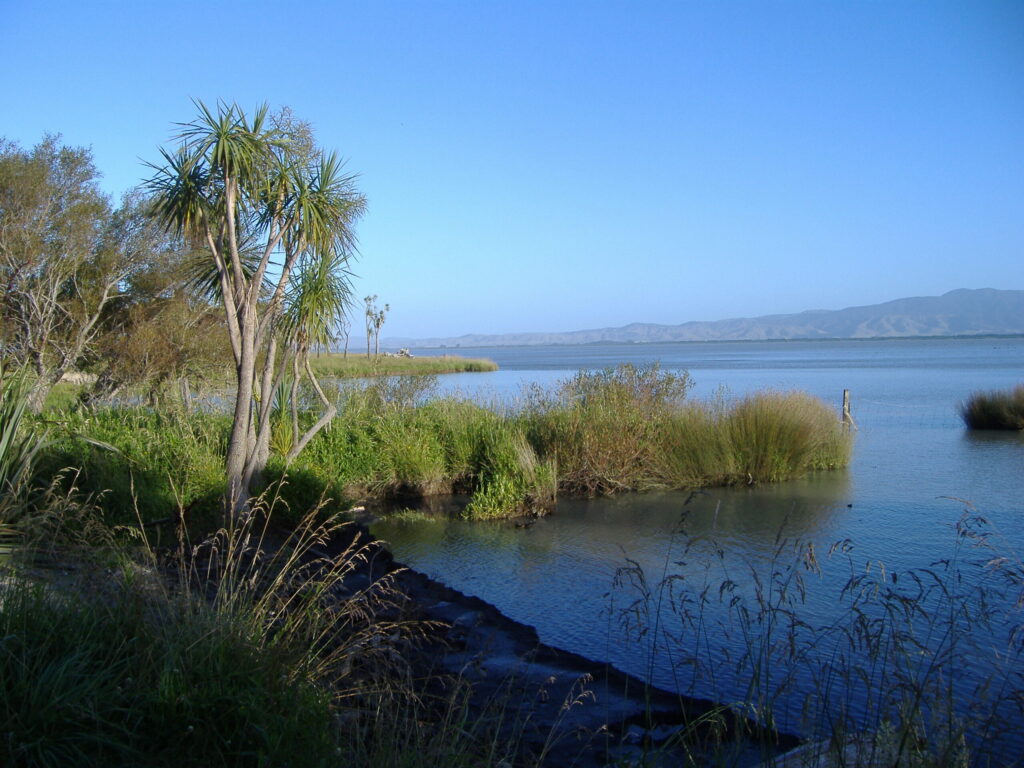Muggy, boggy and waiting to be drained – our past opinions on wetlands have not aged well. Wetland restoration could be vital to tackling biodiversity and climate change crises – here’s why.

Quantifying the benefits of wetland restoration

Humans drained 90% of New Zealand’s wetlands in the name of prosperity, progress and pasture – not knowing or thinking about the future consequences. Today, we’re feeling the beginnings of those consequences as our homes, farms and towns flood in heavy rain and native species eke out an existence in the fragment of remaining wetlands.
We know restoring wetlands is good. Stephanie Tomscha et al. from Victoria University of Wellington recently researched just how good.
In their research paper on the benefits of wetland restoration in the Wairarapa, they found landowners enjoyed not one or two benefits but six.
Wetlands restoration:
- Increases soil organic carbon by around 20%
- Increases soil permeability to water by 27%
- Increases native plant species richness by 15 species
- Reduces plant-available phosphorus by 23%
- Provides pleasant aesthetics
The research looked at all these benefits using different methods, using a mixture of in-person surveys, geospatial modelling, field measurements, and participatory mapping to identify changes in ecosystem services through wetland restoration.
Dr Tomscha says they asked landholders to map their restored wetlands, modelled the area upstream that contributed to each wetland and estimated how much each restoration project improved water quality.
Field surveys of plant diversity and characterised soil properties in restored wetlands and adjacent unrestored land estimated differences in ecosystem services attributable to restoration activities.
“Using multiple methods allowed us to capture a wide range of ecosystem services and how they interacted, providing comprehensive and quantitative estimates of the gains when wetlands are restored on private lands,” says Dr Tomscha.
A climate change secret weapon?
Restored wetlands could also contribute to reducing greenhouse gases and mitigating future flooding.

“We found that restoration on private land provided significant gains in soil organic carbon, native plant species richness, and saturated hydraulic conductivity, and also achieved desirable declines in plant-available phosphorus. These changes in soil quality contribute to a more stable climate, diminished flooding, and cleaner waterways,” says Dr Tomscha.
However, the power of wetlands is currently overlooked.
The paper explains: “Soils from restored wetlands may be leveraged to mitigate greenhouse gases. In New Zealand, only afforestation has been recognised under the emissions trading scheme. Consequently, landholders are not credited for the carbon gains in restored wetland soils.
“Concurrently, we demonstrated that by restoring wetlands, nitrogen and phosphorus are less likely to leach into nearby lakes and streams, resulting in improved water quality downstream.
“Finally, we add to evidence that wetland restoration increased soil permeability, and thus, the capacity to abate floods, indicating that wetland restoration may provide a promising alternative to engineered flood protection.”
Predator control as part of wetland restoration
For those inspired by the clear and proven benefits of restoring wetlands, a handbook guides you through a restoration project.
Restoring a wetland to health will likely involve some kind of predator and pest control. Wetlands support such great concentrations of bird life – far more species than similar forested areas. The survival of threatened species such as the Australasian bittern, brown teal, fernbird, marsh crake and white heron relies on wetlands.
Unfortunately, wetlands are also havens for introduced predators such as rats, possums and mustelids, so control must target all kinds of predators. This toolkit about predator control around wetlands should help you get started.
Everyone’s heard of using more public transport, eating less meat and using less fossil fuels – but joining a wetland restoration project is another way to take action on climate change.
The Wetland Trust lays out the various ways you can help play a part in preserving wetlands.
So perhaps it’s time to dump the ‘muddy swamp’ image entirely and embrace the multiple benefits offered by restored wetlands – before more wetlands are lost from our landscape.

